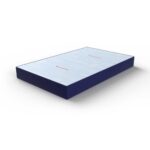Introduction
Crafting exceptional soundscapes with the Galaxy 32 patch iideas requires creativity and technical proficiency. Whether you’re an audio engineer, musician, or sound designer, this article explores a range of innovative patch ideas, techniques, and real-world applications that can elevate your audio projects. By integrating cutting-edge patching techniques, you can push the boundaries of your sound design and explore new creative possibilities.
Understanding Patch Basics
Before diving into specific patch ideas, it’s essential to understand the basics of patching. Patching allows you to route audio signals in a way that enhances flexibility and creativity in your sound design. By using patch cables and software configurations, you can create intricate signal chains that would otherwise be difficult to achieve.
What is a Patch?
A patch is essentially a configuration of how audio signals travel through various components of an audio system. With patches, you can combine multiple effects and devices to modify and shape your sound. Whether through physical hardware or digital interfaces, patching is at the core of modern audio production.
Why Use Patches?
The main benefit of using patches is the flexibility they offer. By adjusting your signal chain, you can easily create and modify sounds without having to physically rewire your setup each time. Furthermore, patches can save valuable time by allowing you to recall complex setups instantly.
Key Benefits of Patching
- Flexibility: Easily reconfigure signal paths without the hassle of rewiring.
- Efficiency: Store and recall complex setups with a click of a button.
- Creativity: Unlock new sound possibilities by experimenting with various audio sources and effects.
Multitrack Setups for Diverse Soundscapes
Multitrack setups are a great way to create intricate soundscapes, as they allow you to separate each audio element and manipulate it independently. With the Antelope Galaxy 32 Synergy Core, setting up a multitrack session is straightforward, and it opens up a world of creative possibilities.
Setting Up Multitrack Sessions
To set up a multitrack session, begin by choosing your instruments or audio sources. Each audio source should be routed to a separate track to maintain clarity. Once your tracks are set, adjust the levels to ensure that each element complements the others. A well-balanced multitrack session is essential for crafting immersive audio experiences.
Example Setup
|
Track |
Instrument/Source |
Effect Chain |
|
1 |
Electric Guitar |
Reverb, Delay |
|
2 |
Vocals |
Compressor, EQ |
|
3 |
Synthesizer |
Chorus, Flanger |
|
4 |
Drums |
Compressor, Reverb |
Tips for Effective Multitrack Setups
- Label Each Track: Keep your session organized by labeling each track clearly.
- Adjust Pan Settings: Use panning to create a sense of space within the mix.
- Monitor Levels: Always keep an eye on the levels to avoid clipping.
By paying attention to these details, you’ll ensure that your multitrack sessions are well-structured and ready for further enhancement with effects and other processing techniques.
Layering Techniques for Richer Audio
Layering is an essential technique that adds depth and richness to your sound. It involves combining multiple audio sources or effects to create a more complex and engaging final product. Proper layering can transform a simple sound into a dynamic and immersive audio experience.
How to Layer Effectively
Start with a strong base layer, like a drum loop or bass line, and then gradually introduce new elements. These additional layers could be other instruments, synths, or even vocal samples. The key is to ensure each layer has its own distinct role within the mix, avoiding redundancy.
Benefits of Layering
- Enhanced Texture: Adding layers increases the texture and detail of your sound.
- Dynamic Range: A mix of different layers can provide greater variation in volume and tone.
- Creative Freedom: Layering allows you to experiment and find unique combinations of sounds.
Tips for Layering
- Be Selective: Not every sound needs to be layered. Choose elements that complement each other.
- Balance Layers: Ensure that each layer is audible without overpowering others.
- Use Automation: Automate the volume or effects on different layers to create movement and variation.
Incorporating Effects for Enhanced Sound Design
Effects are essential tools for shaping your sound. Whether you’re adding reverb to create a sense of space or using delay to add complexity, effects can significantly enhance your sound design. The Antelope Galaxy 32 Synergy Core offers a wide variety of built-in effects that can be easily integrated into your patch setup.
Commonly Used Effects
- Reverb: Simulates the acoustics of different spaces, creating a sense of depth.
- Delay: Adds a repeating echo effect that can make your sound feel more expansive.
- Compression: Helps control the dynamic range by smoothing out loud and soft sections of a track.
Tips for Using Effects
- Don’t Overdo It: While effects can enhance your sound, too many can muddy the mix. Use them strategically.
- Experiment: Try different settings to find the right sound for your project.
- Layer Effects: Don’t hesitate to use multiple effects in sequence. For example, combine reverb and delay for a spacious, atmospheric sound.
Example Effects Chain
|
Effect |
Purpose |
|
Reverb |
Adds space and ambiance |
|
Delay |
Introduces echoes |
|
EQ |
Adjusts frequency balance |
|
Compressor |
Smooths dynamics |
This simple effects chain can completely transform your sound, giving it depth, space, and clarity.
Real-World Applications and Success Stories
The power of the Galaxy 32 patch iideas is evident in the many real-world applications where it has been used. Artists, sound engineers, and producers have successfully utilized custom patches to achieve professional-grade audio results.
Case Study: Live Performance Enhancements
- Challenge: A live band faced difficulty achieving clear and dynamic audio during performances.
- Solution: By using custom patches for each instrument, they were able to separate and enhance the sound of each element, improving clarity and overall balance.
- Result: The band reported improved sound quality during live shows, and the audience noticed the difference in audio clarity.
Tips from Industry Professionals
- Stay Updated: Always check for firmware updates that could improve patch functionality.
- Document Settings: Keep a record of patch setups that work well so you can replicate them in the future.
- Collaborate: Sharing ideas with other professionals can lead to innovative patching solutions that you may not have considered.
These tips can help you get the most out of your Antelope Galaxy 32 Synergy Core, regardless of whether you’re working on a live performance or a studio production.
Advanced Patch Ideas for the Experienced User
If you’re already familiar with basic patching techniques, it’s time to explore advanced ideas that can push the limits of your sound design. These techniques will help you integrate more complexity and dynamic range into your audio projects.
1. Parallel Processing
Parallel processing involves running multiple signal paths simultaneously, each with its own processing chain. This technique allows you to apply different effects to the same sound, creating a more intricate final product.
How to Implement Parallel Processing
- Create multiple tracks with the same audio source.
- Apply different effects to each track.
- Blend the processed tracks together for a unique result.
2. Hybrid Patching
Hybrid patching combines analog gear with digital processing to create a blend of warmth and clarity. You can use analog equipment like hardware synths, compressors, or EQs, then integrate them into your digital patch setup for enhanced tonal variety.
Example of Hybrid Patching
- Analog Synth → Digital EQ → Digital Reverb
3. Dynamic Patching
Dynamic patching involves adjusting your patch configurations in real time during live performances. This is particularly useful for DJs and live electronic musicians who need to tweak their sound on the fly.
Example Use Case for Dynamic Patching
- Change filter settings or introduce effects during key moments in a live set.
Conclusion
Galaxy 32 patch iideas offers an incredible platform for sound design and performance. By experimenting with multitrack setups, layering techniques, and effect chains, you can craft unique and immersive audio experiences. Advanced patching techniques, such as parallel processing and hybrid patching, provide additional ways to push the boundaries of your sound. Drawing inspiration from professionals and real-world applications further guides your creative journey, ensuring that you can always produce the best sound possible.
FAQs
What is the Galaxy 32 patch iideas?
Galaxy 32 patch ideas an advanced audio interface that delivers high-quality sound and real-time effects processing, ideal for studio and live setups.
How do I set up multitrack sessions with Galaxy 32?
Route audio sources to separate tracks, adjust levels, and apply effects. The interface allows independent track management for easy mixing.
What are the benefits of layering sounds?
Layering adds depth and complexity, creating rich and immersive soundscapes.
How can I incorporate effects effectively?
Apply effects like reverb, delay, and compression in sequence, ensuring each layer enhances the sound without overwhelming it.
Can I use the Antelope Galaxy 32 Synergy Core for live performances?
Yes, it’s perfect for live shows, offering real-time processing and customizable patches for flexibility during performances.
What is hybrid patching?
Hybrid patching combines analog gear and digital effects to create a dynamic, versatile sound using the best of both worlds.




